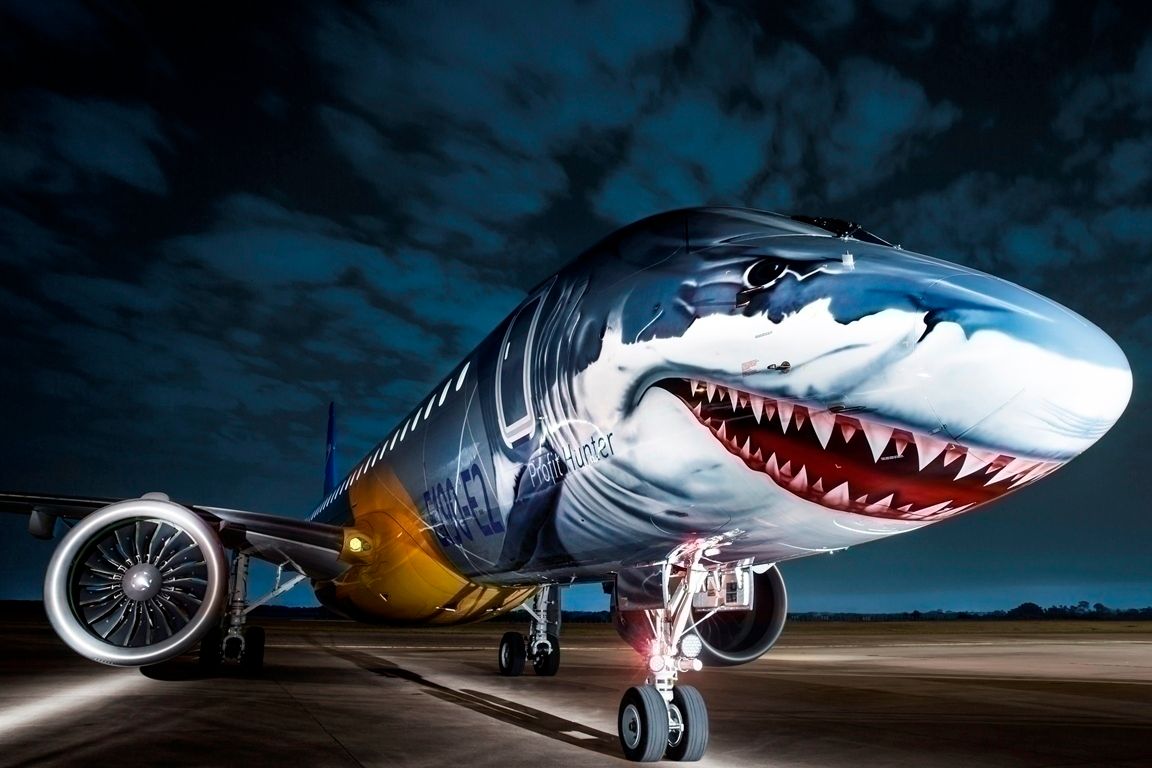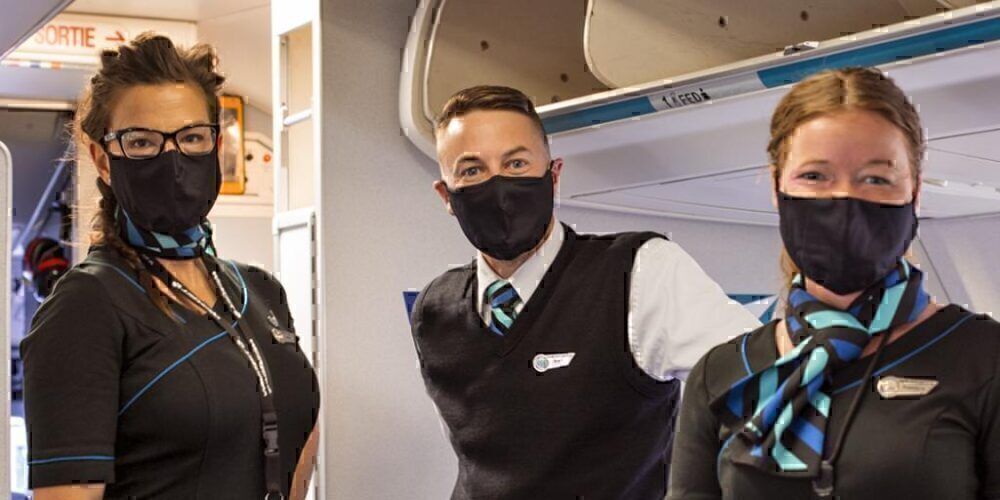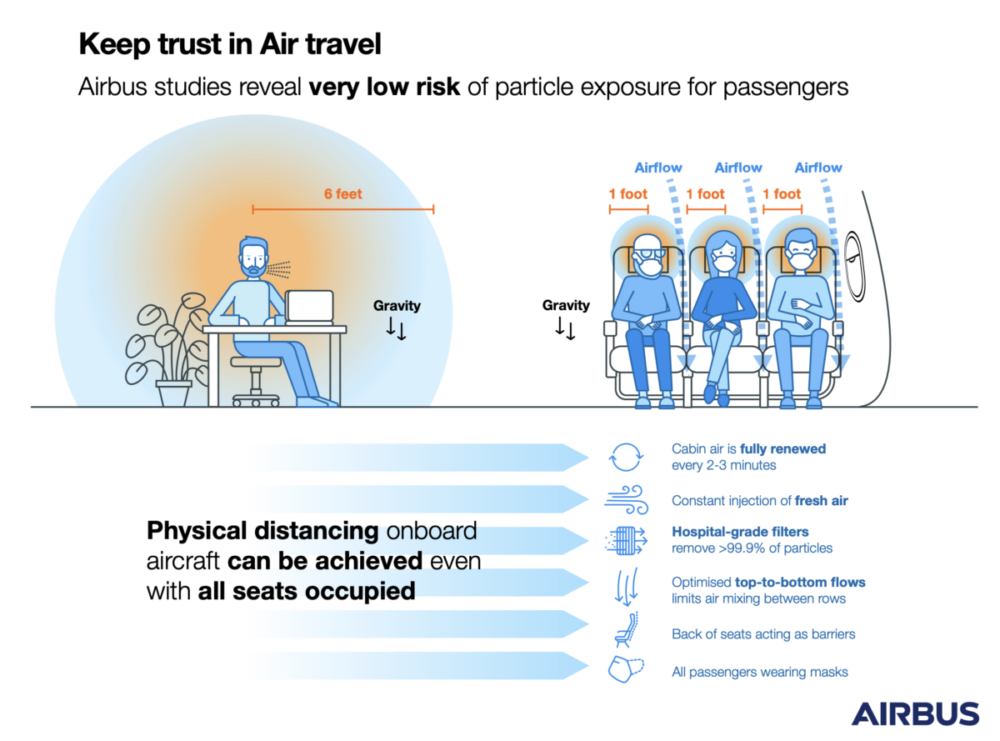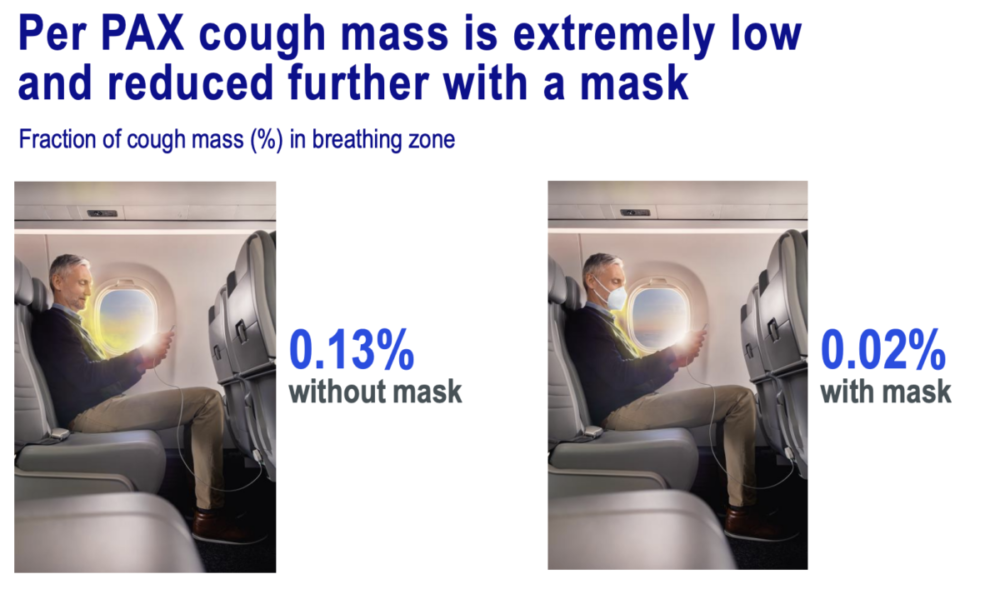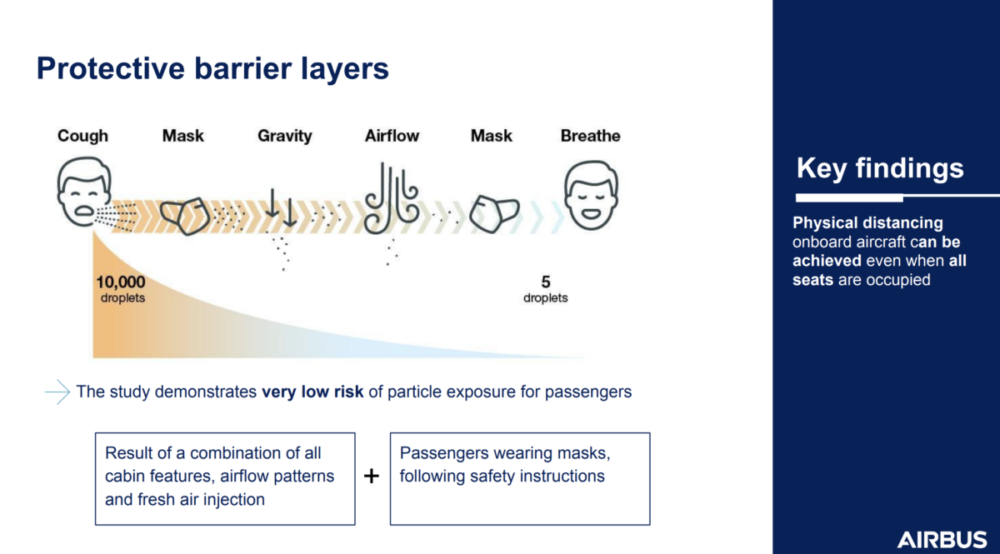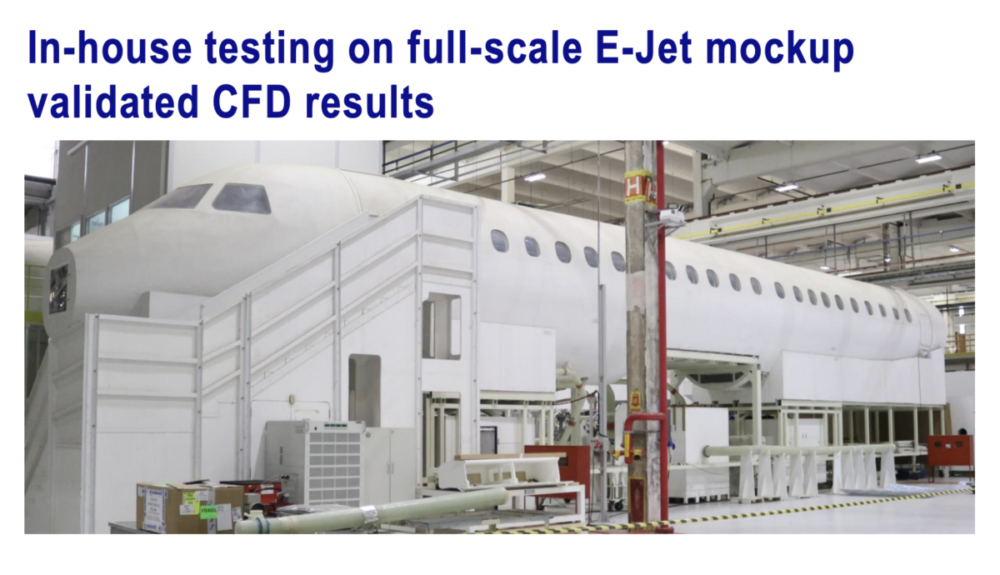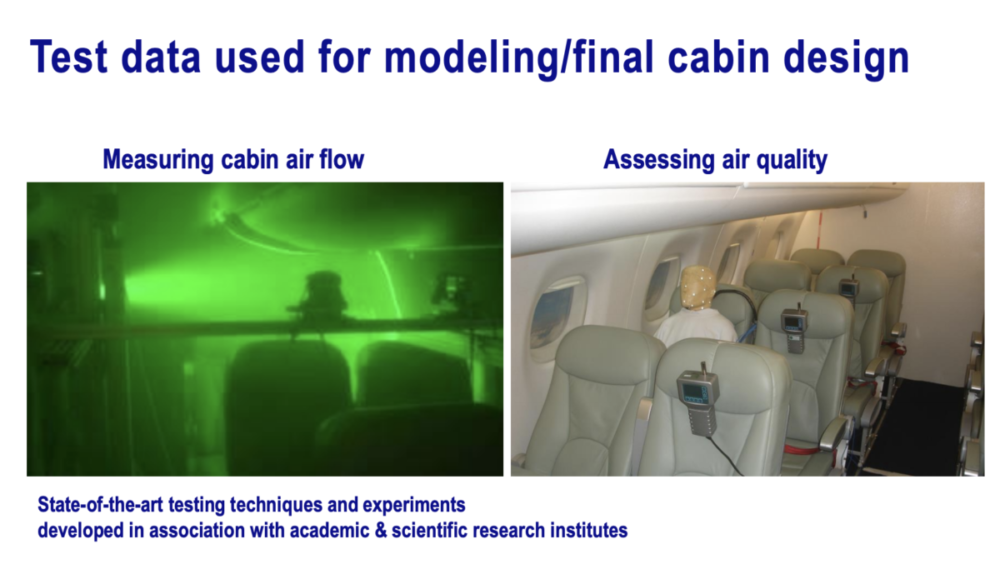In a rare press conference bringing together all three major commercial airplane manufacturers, the International Air Transport Association (IATA) has demonstrated the incredibly low risk of contracting COVID on a plane. Airbus, Boeing and Embraer presented their independent findings, using complex computational fluid dynamics (CFD) to model the risks to passengers. The outcome showed passengers are more at risk from a lightning strike than from COVID transmission on a plane.
A very low-risk environment
Throughout the pandemic, the International Air Transport Association (IATA) has advocated for multiple levels of safety throughout the travel process. This starts with health screening at the airport and implementation of contactless processes through to enhanced sanitization and mask-wearing onboard.
Despite the efforts of airlines and airports to make travel safe, passengers remain unconvinced. A recent IATA survey showed that 60% thought cabin air was dangerous. Their biggest concern was catching COVID from a passenger seated next to them.
Today, IATA came together with the world’s three biggest aircraft manufacturers – Boeing, Airbus and Embraer, to present findings of independent research conducted by each of the OEMs on inflight transmission of COVID. Within the presentation, Dr David Powell, IATA’s Medical Advisor, discussed the evidence of actual transmission occurring on a plane.
Dr Powell had collated all the peer-reviewed literature documenting COVID transmission on an aircraft. Out of all the flights that have taken place since the pandemic began, representing some 1.2 billion passengers flying, only 44 people have been confirmed to have caught COVID from another flier.
That equates to one case for every 27.3 million travelers, an incredibly small number. While Dr Powell admits that the number may be higher than 44, he pointed out that even if the research had missed 90% of the infections, it would still only be one case for every 2.73 million travelers.
To put that in perspective, the CDC figures for lightning strikes on people in the US put the risk of being hit at one in every 1.2 million people. That means you’re more than twice as likely to be struck by lightning as you are to catch COVID on a plane.
Alexandre de Juniac, IATA’s Director General and CEO, came to the same conclusion, stating,
“Nothing is completely risk-free. But with just 44 published cases of potential inflight COVID-19 transmission among 1.2 billion travelers, the risk of contracting the virus on board appears to be in the same category as being struck by lightning.”
Stay informed: Sign up for our daily aviation news digest.
Why is inflight transmission so low?
There are a number of elements of aircraft architecture that make the cabin a low transmission zone. Seats and passengers face in one direction for a start, which reduces the face to face interactions taking place. The seat backs themselves act as a solid barrier, preventing transmission between rows.
Added to this is the unique way that air flows around the cabin. The top to bottom flow of air and advanced HEPA filtration means the environment is less conducive to droplet spread than other indoor environments.
Boeing, Embraer and Airbus have all been undertaking their own independent research into how viral particles spread in the enclosed space of the aircraft cabin. All three approached their studies in very different ways, and of course, were dealing with varying types of aircraft. However, interestingly, all arrived at the same conclusion.
All three made use of computational fluid dynamics (CFD) to test how droplets of aerosols that could contain COVID were spread around the plane. Boeing used synthetic and live human safe viruses to investigate real-life effects of coughing and breathing around the cabin in a variety of aircraft types, as well as testing how that changed with the use of masks and gaspers (air vents) on or off.
Airbus took a more paper-based approach, using modeling software to simulate the spread of a virus. They used the same tool to compare this to a non-aircraft environment. Its modeling accounted for parameters such as airspeed, direction and temperature at 50 million points in the cabin, up to 1,000 times per second.
Over at Embraer, their testing involved fabricating a life-size mockup cabin. It analyzed the cabin environment considering a coughing passenger in several different seats and airflow conditions onboard.
Three different approaches, but three very similar results. The OEMs all found that the risk of viral transmission on a plane was very, very low. Airbus went so far as to say that seated on a full airplane, wearing a mask, was equivalent to standing six feet away from someone on the ground. Embraer further identified that wearing a mask would reduce viral transmission six-fold, although the risk was still very low without one. De Juniac added,
“The detailed computational fluid dynamics research of the aircraft manufacturers demonstrates that combining the aircraft’s existing design features with mask-wearing creates a low-risk environment for COVID-19 transmission. As always, airlines, manufacturers and every entity involved in aviation will be guided by science and global best practices to keep flying safe for passengers and crew.”
Do the findings of the OEM research give you more confidence to get on a plane? Let us know your thoughts in the comments.

